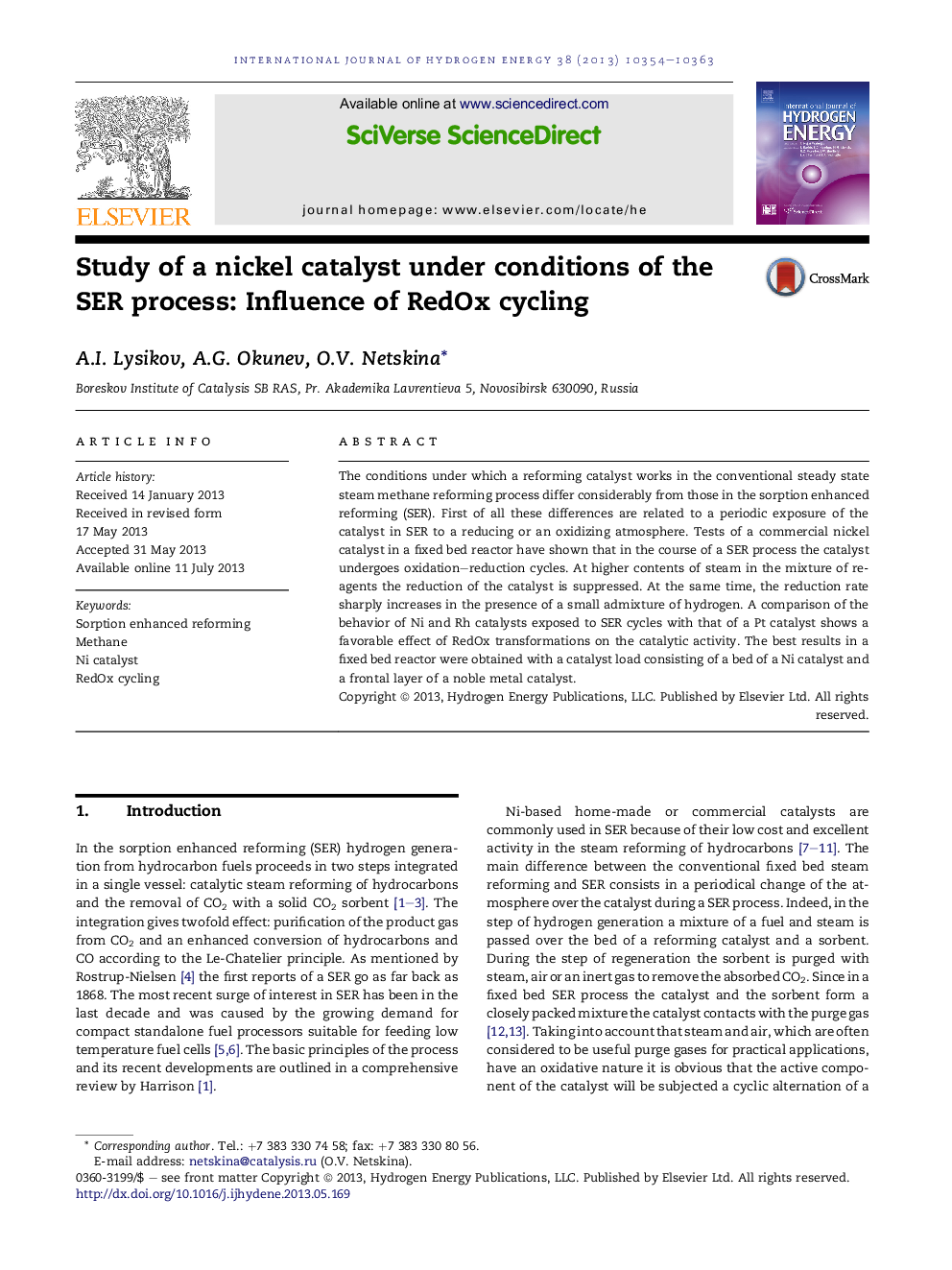| Article ID | Journal | Published Year | Pages | File Type |
|---|---|---|---|---|
| 7722108 | International Journal of Hydrogen Energy | 2013 | 10 Pages |
Abstract
The conditions under which a reforming catalyst works in the conventional steady state steam methane reforming process differ considerably from those in the sorption enhanced reforming (SER). First of all these differences are related to a periodic exposure of the catalyst in SER to a reducing or an oxidizing atmosphere. Tests of a commercial nickel catalyst in a fixed bed reactor have shown that in the course of a SER process the catalyst undergoes oxidation-reduction cycles. At higher contents of steam in the mixture of reagents the reduction of the catalyst is suppressed. At the same time, the reduction rate sharply increases in the presence of a small admixture of hydrogen. A comparison of the behavior of Ni and Rh catalysts exposed to SER cycles with that of a Pt catalyst shows a favorable effect of RedOx transformations on the catalytic activity. The best results in a fixed bed reactor were obtained with a catalyst load consisting of a bed of a Ni catalyst and a frontal layer of a noble metal catalyst.
Related Topics
Physical Sciences and Engineering
Chemistry
Electrochemistry
Authors
A.I. Lysikov, A.G. Okunev, O.V. Netskina,
